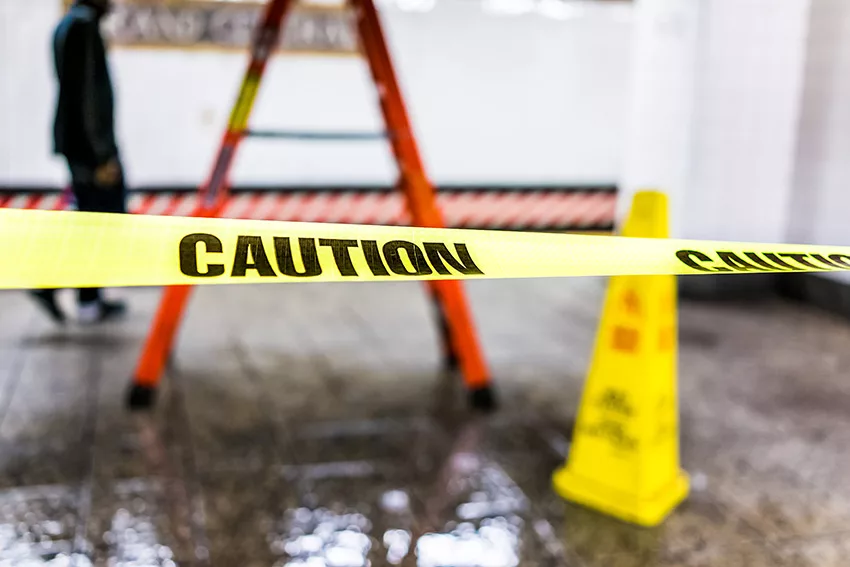Slip and fall accidents can occur in various settings, such as at work, in public places, or on private property. Victims of these accidents may suffer from injuries that range from minor bruises to severe fractures or even traumatic brain injuries. As an injury attorney with over 30 years of experience, I understand the importance of gathering strong evidence to support your slip and fall case. In this comprehensive guide, I will outline the types of evidence needed in slip and fall cases, as well as tips for effectively gathering and preserving this information.
The Importance of Evidence in Slip and Fall Cases
A successful slip and fall claim hinges on the ability to prove that the property owner or manager was negligent, and their negligence caused your accident and resulting injuries. To do this, you’ll need to gather various forms of evidence that demonstrate the following:
- The existence of a hazardous condition on the property
- The property owner or manager knew or should have known about the hazard
- The property owner or manager failed to take appropriate action to remedy the hazard
- The hazardous condition directly caused your slip and fall accident
- You suffered damages as a result of the accident
Types of Evidence in Slip and Fall Cases
Photographic and Video Evidence
Photographs of the Accident Scene
- Capture images of the hazard itself (e.g., wet floor, uneven surface, poor lighting)
- Take photos from multiple angles and perspectives
- Document the surrounding area to show any lack of warning signs or barriers
Surveillance Footage
- Request access to any available security camera footage from the property owner or manager
- Keep in mind that footage may be deleted or overwritten, so act quickly
Incident Reports and Witness Statements
Incident Reports
- If your accident occurred in a commercial setting, file an incident report with the management
- Request a copy of the report for your records
- Make note of any discrepancies between your account and the report
Witness Statements
- Obtain contact information for any witnesses to the accident
- Ask witnesses to provide written or recorded statements describing the incident
Medical Records and Bills
Medical Records
- Request copies of all medical records related to your slip and fall injuries
- Keep track of treatments, diagnoses, and prognoses from healthcare providers
Medical Bills
- Retain copies of all bills and receipts for medical treatment
- Include expenses such as hospital stays, surgeries, medications, and physical therapy
Documentation of Lost Wages and Earning Capacity
Lost Wages
- Obtain documentation from your employer detailing the time you missed from work and any wages you lost as a result
- If self-employed, gather records that show the impact of your injuries on your business
Lost Earning Capacity
- If your injuries have affected your ability to work in the long term, consult with an economic expert to calculate your future earning capacity
- This expert can provide testimony on how your injuries will impact your future income and career prospects
Tips for Gathering and Preserving Evidence
Act Quickly and Thoroughly
- Time is of the essence when gathering evidence in slip and fall cases
- The accident scene may change, and witness memories may fade over time
- Begin collecting evidence as soon as possible after your accident
Maintain a Personal Injury Journal
- Keep a detailed record of your accident, injuries, and recovery process
- Include descriptions of your pain levels, limitations, and emotional well-being
- Update your journal regularly to track your progress and setbacks
Consult with an Experienced Injury Attorney
- An injury attorney with experience in slip and fall cases can provide invaluable guidance in gathering and preserving evidence
- They can help you identify critical pieces of evidence and ensure you don’t overlook essential details
- Your attorney can also assist in obtaining hard-to-access records or documents
Preserve Physical Evidence
- If possible, retain any physical evidence related to your accident, such as damaged clothing or shoes
- These items can help demonstrate the severity of the accident and the hazard that caused it
Organize Your Evidence
- Keep all of your evidence in a well-organized and easily accessible format
- This organization will help you and your attorney build a strong case and streamline the legal process
Conclusion: Gathering and preserving evidence is crucial to the success of your slip and fall case.
By following the guidelines provided in this comprehensive guide, you can significantly improve your chances of proving negligence and obtaining the compensation you deserve for your injuries. Remember, the key to a successful slip and fall claim is to act quickly and thoroughly, maintain a detailed personal injury journal, consult with an experienced injury attorney, and keep your evidence organized and accessible.
As an injury attorney with over 30 years of experience, I am committed to helping slip and fall accident victims navigate the complex legal process with a professional and compassionate approach. If you or a loved one has been injured in a slip and fall accident, don’t hesitate to reach out for assistance and guidance in building a strong case for compensation.


